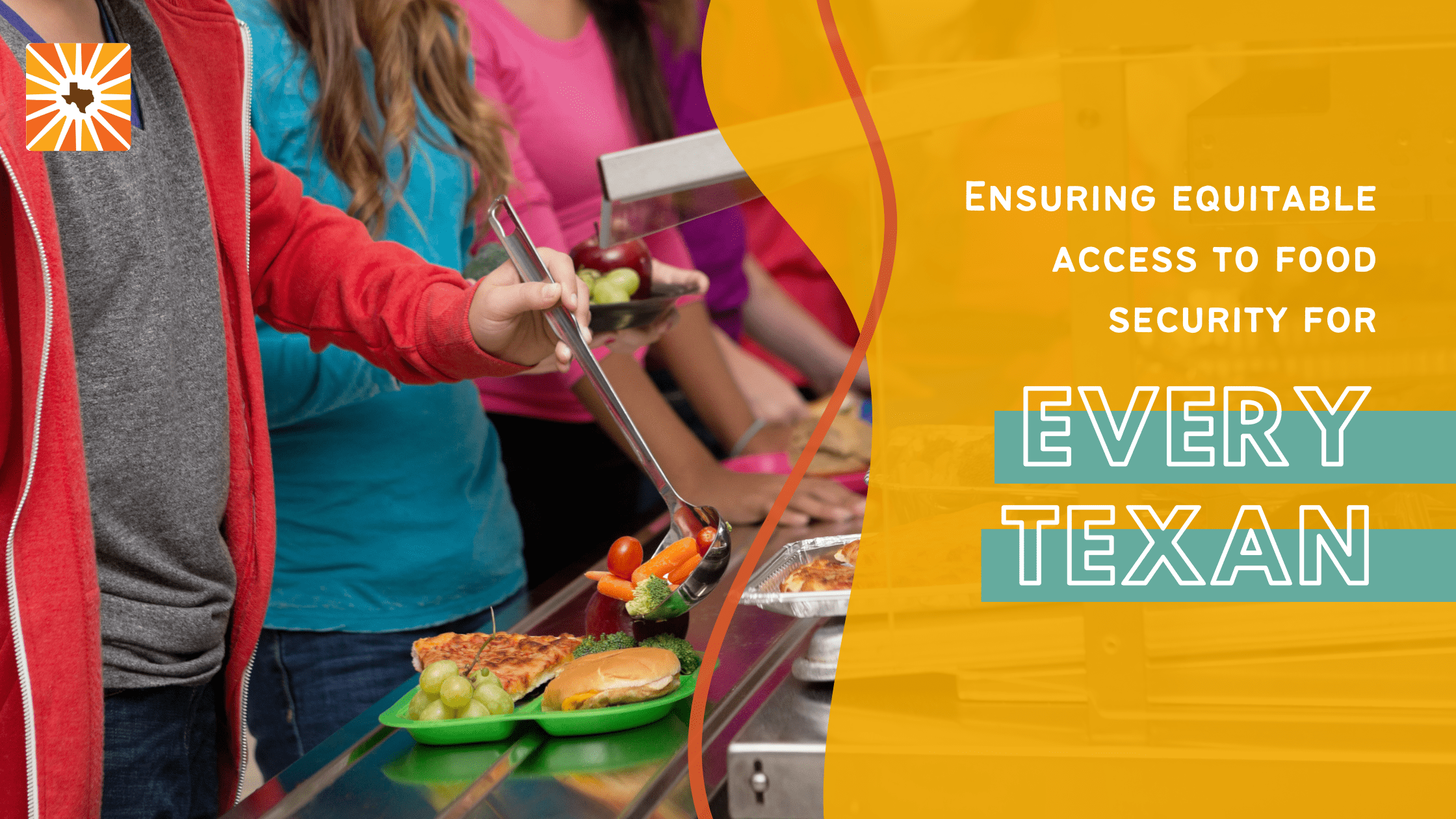As a centerpiece of his War on Poverty, President Lyndon B. Johnson signed the Food Stamp Act of 1964 on August 31 of that year. Now known as the Supplemental Nutrition Assistance Program (SNAP), more than 3.3 million Texans currently rely on this program to provide food for their families. In a state as great as ours, too many families experience food insecurity and face difficulties meeting basic food needs. When Texas families struggle to make ends meet – juggling finances to cover rent, utilities, and transportation – often little is left for food.
Texans who provide kinship care to the children of family members are particularly in need of food assistance programs; nearly 42% of Texas children in state care are placed with relatives after being removed from their homes by Child Protective Services. Many more are living away from their parents in informal or voluntary kinship care placements, though the vast majority of those children live with grandparents. Often on fixed income, grandparents who take in grandchildren are at greater risk of experiencing poverty and food insecurity.
President Johnson understood and addressed these struggles by creating a permanent food assistance program, which has evolved significantly in the last 60 years. Initially, people would purchase “stamps” at a level similar to what the family would spend on food and then receive a bonus, or benefit, based on income level. The Food Stamp Act of 1977 eliminated the need to purchase “stamps” to receive the benefit while also establishing national eligibility for participation. As a result, the amount of benefits a family receives is based on the household’s size, income, and expenses.
In the early 2000s, Electronic Benefit Transfer (EBT) cards – similar to credit or debit cards – started to replace paper stamps. The transition to EBT cards reduces stigma for the families using food stamp benefits while also reducing costs and fraud within the program. The program was renamed SNAP in the 2008 Farm Bill.
While the federal government fully funds SNAP benefits, the state and federal governments share the administrative costs. Health and Human Services Commission (HHSC) administers SNAP and is charged with making accurate eligibility determinations, issuing payments, overseeing participating retailers, and preventing fraud.
Unlike the 38 states that do not count assets, Texas chooses to impose a vehicle asset test (VAT) on all SNAP applicants in addition to income limits. That means our state factors in a car’s value when determining if a family is eligible for SNAP benefits. In 2001, Texas set a resource limit of $5,000 in countable cash, a first vehicle worth up to $15,000, and any additional vehicles could be worth up to $4,650 (any excess vehicle value counts towards the cash resource limit). Those limits were never indexed to inflation, so they’ve lost purchasing power over the decades and no longer reflect the cost of safe and dependable family cars or trucks. Fortunately, in 2023 the Legislature updated Texas’ SNAP VAT to $22,500 for first vehicles and $8,700 for each additional vehicle. This change will help thousands of Texans – including families with young children, the elderly, and kinship care providers – who face hunger every month simply because they need a car to survive.
In 2023, HHSC formally recognized food security as a significant, non-medical component of individual, family, and community health. HHSC’s 2023 Non-Medical Drivers of Health (NMDOH) Action Plan includes ways to build on the foundation laid by the 1964 Food Stamp Act by assessing current HHS SNAP enrollment and utilization data to enhance the program’s use. By increasing the number of people enrolled in SNAP and ensuring that eligible community members are able to use the program to its fullest, Texas can improve health outcomes and stabilize access to healthy food.
However, Texas is currently experiencing an eligibility system crisis that requires legislative intervention. SNAP benefits have lapsed for anywhere from tens to hundreds of thousands of eligible Texans due to paperwork backlogs at HHSC. These failures not only expose Texas to the threat of federal financial sanctions and/or the loss of federal funds, but far more importantly, these failures cause real suffering. Failure to take immediate action to address the eligibility system crisis amounts to an explicit decision to increase financial hardships and human suffering among low-income Texas children, the elderly, and individuals with disabilities today and for years to come.
An effective eligibility and enrollment system forms the foundation for meeting the needs of eligible, low-income Texans. Its most basic function is to process eligibility accurately and without delay. Maintaining a system that can do that consistently takes meaningful investments.
When the Legislature goes back into session this January, they should reflect on the vision of President Johnson and ensure no Texas family goes hungry due to an inadequate eligibility system and unnecessary barriers to participation.

